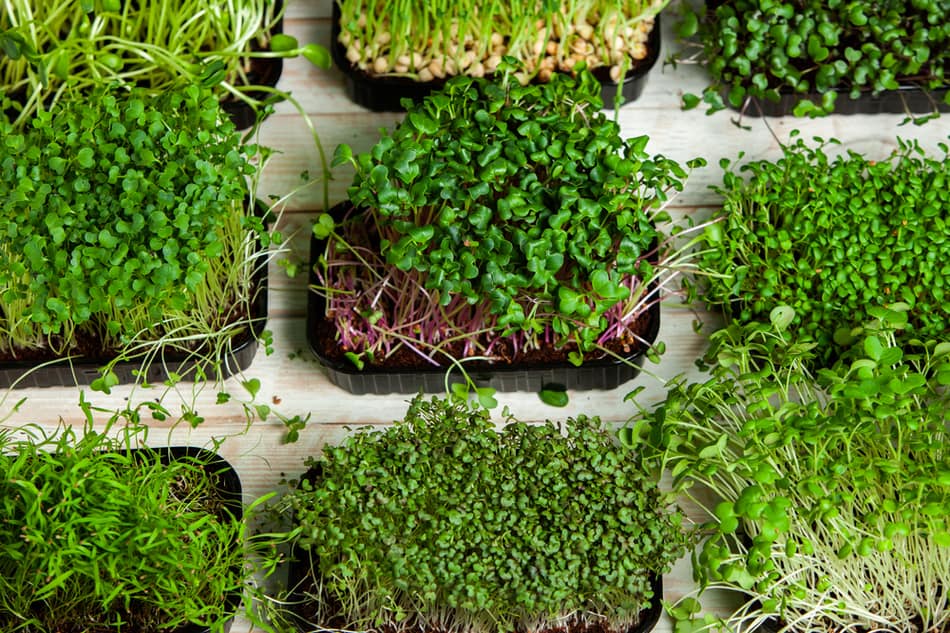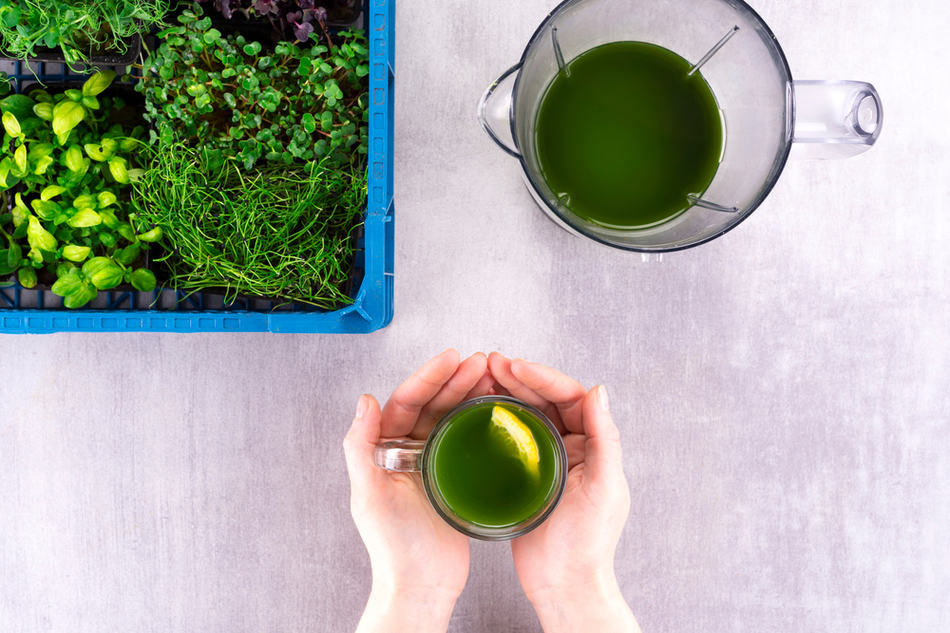Microgreens are all the rage right now. They are a great way to get nutrient-rich greens into your diet, and they are perfect for adding color and flavor to your meals. But can you juice them? In this article, I will explore the answer to that question and give you some tips on how to juice microgreens.
Yes, you can juice microgreens! They are a great addition to any juice recipe. Microgreens are tiny plants that are harvested shortly after they germinate. They are packed with nutrients and antioxidants and offer a variety of health benefits.
One of the great things about microgreens is that they come in a wide variety of colors, flavors, and textures. This makes them a perfect addition to any juice recipe. For example, if you are looking for nutrient-rich green juice, you could add kale microgreens to your juicer.
If you are looking for a sweet and refreshing juice, you could add watermelon microgreens. And if you are looking for a zesty and flavorful juice, you could add lemon microgreens. The possibilities are endless!
This article will answer the question and more.
Let’s begin.
What Are The Nutritional Benefits Of Microgreens?
Microgreens are an excellent source of vitamins, minerals, and antioxidants. They are exceptionally high in vitamin C, a powerful immune booster. Vitamin C is also essential for the production of collagen, which is the main structural protein in our skin. Microgreens also contain carotenoids, which are plant pigments that have been shown to protect against cancer and other diseases. In addition to their nutritional value, microgreens have a variety of health benefits.
Some studies have shown that consuming microgreens can help to improve gut health. This is likely because they are rich in fiber and other nutrients that support a healthy gut microbiome. Microgreens have also been shown to boost cognitive function and memory. This is likely due to their high antioxidant content, which has been shown to protect the brain against damage.
Should You Juice Microgreens?
Microgreens are a type of vegetable that is harvested when the plant is young, typically between one and three weeks old. These greens are often used as a garnish or addition to salads, and they are also a popular ingredient in juicing recipes.

While microgreens are generally considered healthy, there is some debate about whether or not juicing them is the best way to consume them. On the one hand, juicing allows you to consume a larger quantity of microgreens in a single sitting. This can be helpful if you are trying to get your daily recommended intake of vegetables. On the other hand, juicing also removes the fiber from the greens, leading to digestive issues for some people.
Ultimately, whether or not to juice microgreens is a personal one. If you enjoy drinking green juice and find that it agrees with your stomach, then there is no reason not to include microgreens in your recipe.
How Can I Add Microgreens To My Juice?
There are many different ways that you can add microgreens to your juice. One of the simplest ways is to add a handful of microgreens to your favorite juice recipe. You can also try juicing them alone or adding them to a smoothie.
If you are looking for a nutrient-packed juice, we recommend adding carrots, apples, ginger, and kale to your juicer and a handful of microgreens. This combination will give you a delicious and healthy drink packed with vitamins, minerals, and antioxidants!
Is Juicing Microgreens Better Than Eating Raw?
This is a difficult question to answer, as there are pros and cons to both consumption methods. On the one hand, juicing allows you to consume a higher concentration of nutrients in a smaller amount of time. This is because the juicing process breaks down the cell walls of the plants, releasing all of the nutrients into your body at once.

However, juicing also removes many of the fiber and water content of the plants, which can reduce the overall nutrient absorption. Additionally, juicing requires special equipment and can be time-consuming to clean up afterward. On the other hand, eating fresh microgreens requires no special equipment and is very easy. But, since you consume them whole, you will not get the same concentrated dose of nutrients and will have to eat more volume-wise to get the same benefit.
At the end of the day, it is up to you to decide which method of consumption is best for you. Try out both and see what works best for your lifestyle and needs.
Microgreen Juice Recipes
Microgreens are nutrient-rich, flavorful greens perfect for adding to juices and smoothies. Here are three recipes that feature microgreens:
1. Spinach Microgreen Juice: This smoothie is packed with nutrients and slightly earthy flavor. Combine one cup of spinach microgreens, one banana, one cup of almond milk, and one tablespoon of honey in a blender. Blend until smooth and enjoy immediately.
2. Kale Microgreen Juice: This juice is slightly bitter and very nutrient-rich. Combine one cup of kale microgreens, one banana, one cup of almond milk, and one tablespoon of honey in a blender. Blend until smooth and enjoy immediately.
3. Beet Microgreen Juice: This smoothie is sweet and earthy with vibrant color. Combine one cup of beet microgreens, half a beet (cooked), one cup of almond milk, and one tablespoon of honey in a blender. Blend until smooth and enjoy immediately. Microgreens are a great way to add nutrients, flavor, and color to your smoothies. Experiment with different combinations to find your favorite!
Final Words On Juicing Microgreens
If you are looking for a way to add more nutrient-rich greens to your diet, microgreens are a great option. When it comes to juicing, microgreens are a great addition to any recipe. They are packed with nutrients and antioxidants and offer a variety of health benefits. They are easy to grow and can be added to any juice recipe. Thanks for reading!
Related Content
Can Microgreens Make You Sick?
What Are The Healthiest Microgreens?
Can You Freeze Microgreens?

